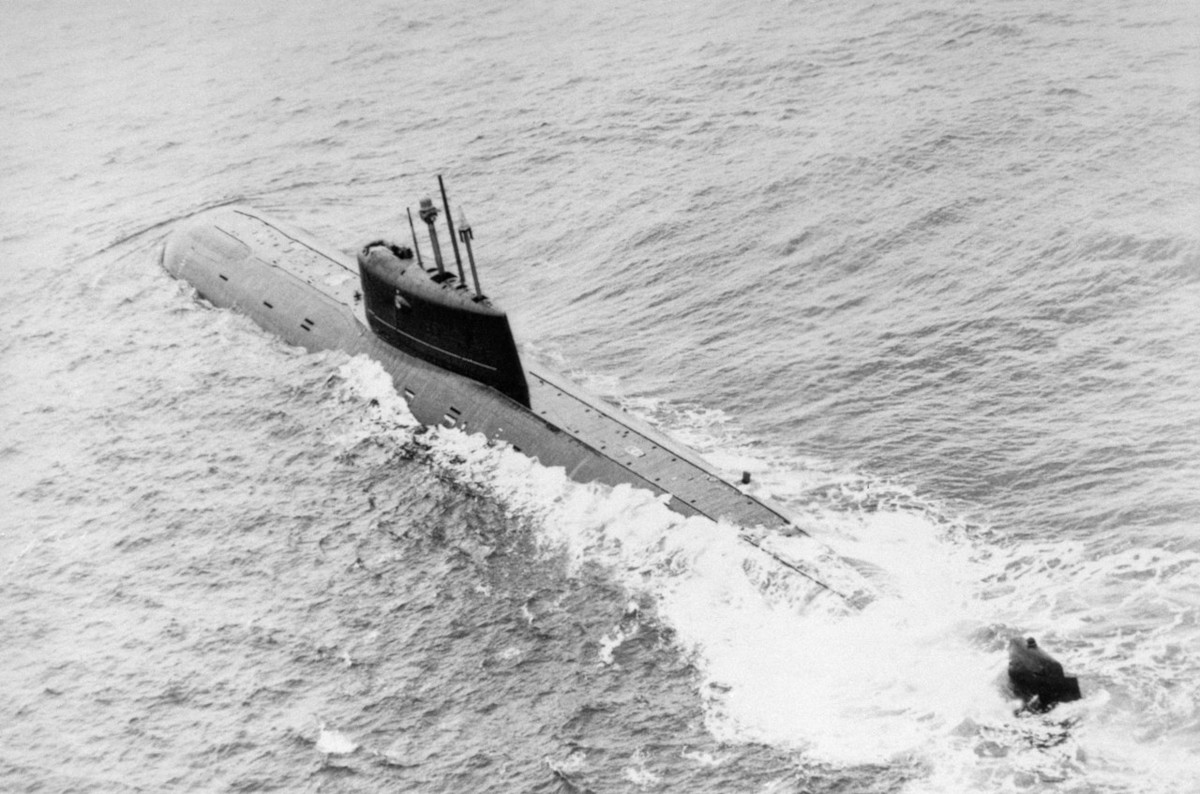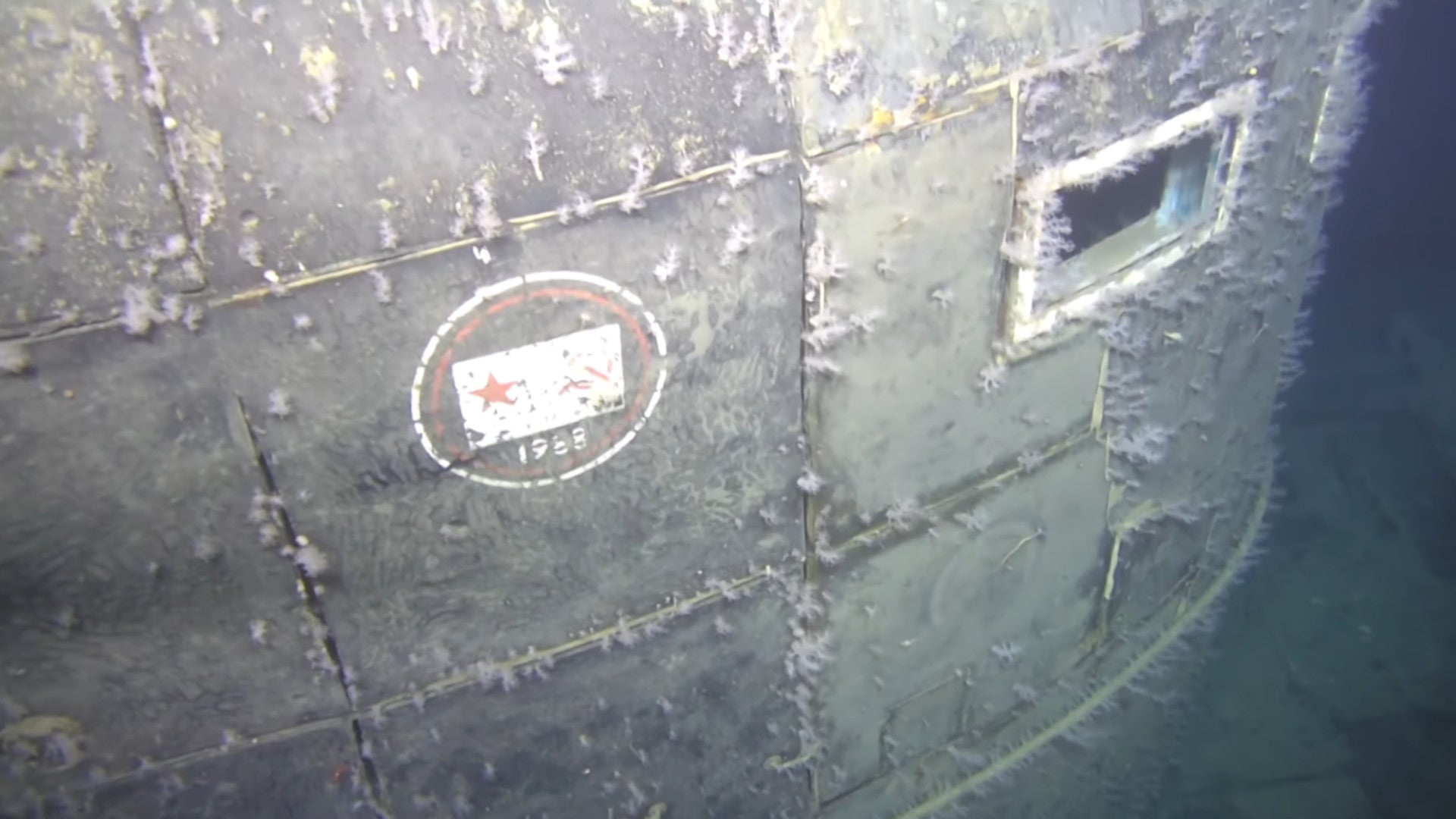A joint Russian-Norwegian team of researchers has taken new seawater samples from around the wreck of the sunken Soviet Project 685 nuclear-powered submarine K-278 Komsomolets, one of which was 100,000 times more radioactive than uncontaminated water. The findings raise concerns that the boat is now actively leaking radiation, either from its reactor or a pair of nuclear-armed torpedoes, after sitting at the bottom of the Barents Sea for more than three decades. This news comes nearly two weeks after a top-secret Russian nuclear submarine suffered a fire that killed 14 sailors, though the Kremlin says this incident did not result in any radiation leaks and that it was able to safely recover the vessel.
News of the test results first broke in Norwegian media on July 8, 2019. The research team aboard the Norwegian research ship G.O. Sars, which Norway’s Institute of Marine Research and the country’s University of Bergen operate jointly, had employed the Norwegian-designed Ægir 6000 deep-diving remotely operated submersible to inspect Komsomolets and take the water samples from a ventilation pipe. The sub is resting at a very deep depth of more 5,500 feet below the surface approximately 100 nautical miles southwest of Norway’s Bear Island in the Barents Sea.
Two samples came back perfectly normal before researchers got the one that produced the extremely elevated radiation reading, according to Norway’s public broadcaster NRK. The team has made clear that their findings are only preliminary, as well, and will need further analysis. Ægir 6000 was also able to get some eerie video footage, seen below, of the submarine sitting at the bottom of the ocean.

“It is important that the monitoring of the nuclear submarine continues, so that we have updated knowledge about the pollution situation in the area around the wreck,” Hilde Elise Heldal, a researcher from the Institute of Marine Research, said in a press release. “The monitoring helps to ensure consumer confidence in the Norwegian fishing industry.”
Komsomolets was the only Project 685 submarine the Soviet Union ever built, getting commissioned into the Soviet Navy in December 1983. Also known as the Plavnik-class to the Soviets and as the Mike-class to NATO, the boat, which featured a titanium inner pressure hull and displaced 8,000 tons submerged, was intended more as a developmental design, but was still fully combat-capable with six 533mm torpedo tubes. The boat was capable of firing conventional torpedoes or the RPK-2 Vyuga, also known as the SS-N-15 Starfish, an unusual anti-submarine missile system you can read about more detail in another piece at The War Zone
here.
Western intelligence believed initially that a pair reactors using liquid-metal lead-bismuth eutectic (LBE) coolant powered Komsomolets, giving it extremely high speed, though this later proved to be incorrect. Liquid metal-cooled reactors can run at much higher temperatures before there is a risk of the coolant boiling off. LBE also won’t react spontaneously with water or air, unlike sodium or sodium-potassium coolants, making it much safer. However, it also highly corrosive and LBE reactors need to be kept consistently at relatively high temperatures or there is a danger that the coolant will solidify.

The Soviets had also considered using LBE reactors for the ultra-fast Project 661 submarine, another one-off design also known as “the Golden Fish,” but eventually chose to use two VM-5 pressure water reactors instead. Komsomolets used a single OK-650b-3 pressure water reactor. LBE reactors were a feature on the Afla-class attack submarines.
K-278’s actual claim to fame was its deep-diving capabilities. On Aug. 4, 1984, Komsomolets reached a then-record depth of 3,350 feet. There are also reports that the design incorporated a number of advanced, automated features that allowed a relatively small crew to operate the submarine.
After years of tests and evaluations, Komsomolets was on her first operational patrol when disaster struck in the Barents Sea on April 7, 1989. A short circuit in the engine room caused a fire that spread quickly and eventually caused the reactor to scram. The submarine, which was submerged at the time, was able to make an emergency ascent and most of the crew were able to get off. Four crew members still died as a result of the fire. Unfortunately, Soviet authorities were slow to respond to the incident and another 34 members of the 64-man crew subsequently died of hypothermia after prolonged exposure to the elements in the frigid Arctic waters.

Komsomolets burned for hours before finally sinking. She has remained at the bottom of the Barents Sea ever since. Her reactor was not the only radioactive payload on board, as she was also carrying two torpedoes with nuclear warheads.
Heldal, the researcher from the Institute of Marine Research, said she wasn’t surprised by the sample showing a potential radiation leak, according to NRK. There have been numerous expeditions to investigate the wreck since the accident that have detected elevated levels of radiation around the boat, though there has never been any confirmation of an actual leak.
But a Russian survey in 1992 found cracks along the entire length of the hull and its hard to believe that the submarine has not continued to degrade in the decades that followed the sinking. On various occasions between 1993 and 1994, Russian officials warned that as time went on the risks of radiation leakage would only increase and called for routine monitoring of the wreckage.
Russia conducted further expeditions in 1994 and 1995 to better seal in the nuclear torpedos as they had been damaged in the accident and were jammed in place, too dangerous to remove. The new video footage from Ægir 6000 still shows extensive damage to the submarine’s hull.

Still, experts have cautioned that the danger from any radioactive leaks the boat may have is likely to be minimal given how deep the wreck is and the limited amount of sea life there, to begin with. Heldal said she was confident that it is still safe for Norwegian fisherman to continue working in the area.
Still, “the new surveys are important for understanding the pollution risk posed by Komsomolets,” Ingar Amundsen, Head of the Norwegian Radiation Protection Authority explained to NRK. The new survey has also taken on a new dimension given that Russia recently suffered a new submarine accident, which also involved a fire caused by an electrical fault on board a nuclear-powered boat.
The sub in question is widely reported to be the top-secret deep-diving spy submarine Losharik and the incident, which occurred on July 1, 2019, killed 14 sailors. Russia says it was able to safely recover the submarine this time and that there was no radiation leak from this new accident, though details about the exact scope of the damage remain murky.
“They all shared one and the same fate – to save the lives of their comrades, to save their vessel and to prevent a catastrophe of global proportions at the cost of their own lives,” Sergei Pavlov, an aide to the Russian Navy’s top commander, reportedly said at a funeral on July 6, 2019, according to Russian media outlet Fontanka. This may imply that the situation on board was more precarious than Kremlin has acknowledged.
Losharik is already shrouded in secrecy, so we may never know for sure what happened exactly and it may be hard to tell when and if the Russians return her to operational service. But she does appear to have escaped a fate similar to Komsomolets, wasting away at the bottom of the sea.
UPDATE: 7/10/2019—
Norway’s Institute of Marine Research has released an updated figure about the radioactivity of one of the seawater samples taken from the Komsomolets wreck, now saying that it is 800,000 times more radioactive than uncontaminated water, according to The Barents Observer. The research team’s assessments about the risks that the wreck poses to commercial fishing in the region and to sea life in the area, in general, remain unchanged.

“What we have measured has very little impact on Norwegian fish and seafood,” Hilde Elise Heldal, one of the researchers from the Institute of Marine Research, said. “Levels [of radioactivity] in the Norwegian Sea are in general very low, and the pollution from Komsomolets is quickly diluted to harmless levels because the wreck is at such deep water.”
Still, “good documentation of the levels in both seawater, sediments, and not least in fish and seafood is needed,” she added. “We will, therefore, continue checking both Komsomolets especially and Norwegian waters in general.”
Contact the author: joe@thedrive.com
